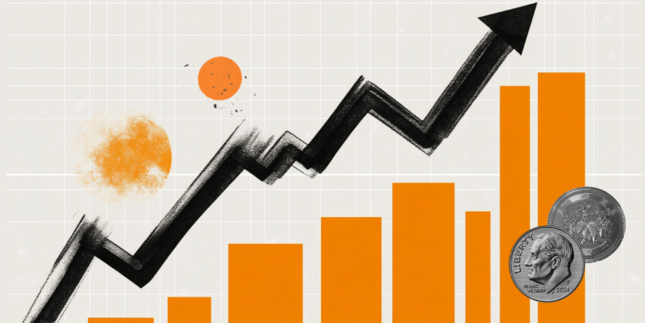Forex Today: US Dollar stands victorious as trade tensions ease
What you need to take care of on Friday, May 2:
Optimism about a de-escalation in the global trade conflict helped the US Dollar (USD) despite disappointing data releases. US President Donald Trump reported undergoing trade talks with South Korea, Japan and India. He also claimed that there’s a “very good” chance of clinching a deal with China, yet added that any pact with Beijing has to be in US terms. At the same time, a Beijing-backed outlet said on Thursday that United States officials have contacted their Chinese counterparts for talks. Tensions between China and the US persist, but optimism led Thursday’s price action.
US Dollar PRICE Today
The table below shows the percentage change of US Dollar (USD) against listed major currencies today. US Dollar was the strongest against the Japanese Yen.
| USD | EUR | GBP | JPY | CAD | AUD | NZD | CHF | |
|---|---|---|---|---|---|---|---|---|
| USD | 0.41% | 0.50% | 1.73% | 0.43% | 0.44% | 0.58% | 0.64% | |
| EUR | -0.41% | 0.08% | 1.31% | -0.01% | 0.02% | 0.17% | 0.21% | |
| GBP | -0.50% | -0.08% | 1.22% | -0.07% | -0.06% | 0.08% | 0.12% | |
| JPY | -1.73% | -1.31% | -1.22% | -1.30% | -1.27% | -1.18% | -1.15% | |
| CAD | -0.43% | 0.01% | 0.07% | 1.30% | 0.02% | 0.15% | 0.19% | |
| AUD | -0.44% | -0.02% | 0.06% | 1.27% | -0.02% | 0.14% | 0.19% | |
| NZD | -0.58% | -0.17% | -0.08% | 1.18% | -0.15% | -0.14% | 0.04% | |
| CHF | -0.64% | -0.21% | -0.12% | 1.15% | -0.19% | -0.19% | -0.04% |
The heat map shows percentage changes of major currencies against each other. The base currency is picked from the left column, while the quote currency is picked from the top row. For example, if you pick the US Dollar from the left column and move along the horizontal line to the Japanese Yen, the percentage change displayed in the box will represent USD (base)/JPY (quote).
Mexican President Claudia Sheinbaum hit the wires by saying she had a very positive conversation with United States (US) President Donald Trump, adding they will continue working on trade in the upcoming days. Also, Trump claimed that US Treasury Secretary Scott Bessent is negotiating with “200 nations,” and “has no life,” amid being involved in trade talks.
Wall Street extended its latest recovery in thin market conditions, and major indexes are about to trim tariffs-inspired losses.
The Bank of Japan (BoJ) announced its decision on monetary policy early on Wednesday, keeping the short-term interest rate target unchanged in the range of 0.40%- 0.50% as widely anticipated. BoJ Governor Kazuo Ueda offered a press conference afterwards, noting that uncertainty from trade policies heightened sharply on officials’ decision. The central bank expects to keep raising rates if the economy and prices move as projected. Finally, he added they expect underlying inflation to cool down due to tariffs and slow global growth. The Japanese yen weakened with the news, with USD/JPY extending gains beyond 145.50.
US data was mixed: On the one hand, Initial Jobless Claims for the week ended April 26 rose by 241K, much worse than the 224K anticipated and the previous weekly figure of 223K. On the other hand, ISM published the April Manufacturing Purchasing Managers’ Index (PMI), which edged lower to 48.7 from 49 in March, beating the market expectation of 48.
The US will release the Nonfarm Payrolls (NFP) report on Friday. The country is expected to have added 130K new job positions in April, while the Unemployment Rate is foreseen at 4.2%, unchanged from March. Employment-related data ahead of the NFP report, however, hints at a soft reading, which may end up weighing on the USD.
EUR/USD lost the 1.1300 level while GBP/USD settled at around 1.3260. Commodity-linked currencies also edged lower, despite the positive tone of Wall Street. The AUD/USD eased towards 0.6360, while USD/CAD trades in the 1.3850 region ahead of Friday’s opening.
US-China Trade War FAQs
Generally speaking, a trade war is an economic conflict between two or more countries due to extreme protectionism on one end. It implies the creation of trade barriers, such as tariffs, which result in counter-barriers, escalating import costs, and hence the cost of living.
An economic conflict between the United States (US) and China began early in 2018, when President Donald Trump set trade barriers on China, claiming unfair commercial practices and intellectual property theft from the Asian giant. China took retaliatory action, imposing tariffs on multiple US goods, such as automobiles and soybeans. Tensions escalated until the two countries signed the US-China Phase One trade deal in January 2020. The agreement required structural reforms and other changes to China’s economic and trade regime and pretended to restore stability and trust between the two nations. However, the Coronavirus pandemic took the focus out of the conflict. Yet, it is worth mentioning that President Joe Biden, who took office after Trump, kept tariffs in place and even added some additional levies.
The return of Donald Trump to the White House as the 47th US President has sparked a fresh wave of tensions between the two countries. During the 2024 election campaign, Trump pledged to impose 60% tariffs on China once he returned to office, which he did on January 20, 2025. With Trump back, the US-China trade war is meant to resume where it was left, with tit-for-tat policies affecting the global economic landscape amid disruptions in global supply chains, resulting in a reduction in spending, particularly investment, and directly feeding into the Consumer Price Index inflation.
Forex News
Keep up with the financial markets, know what's happening and what is affecting the markets with our latest market updates. Analyze market movers, trends and build your trading strategies accordingly.




















